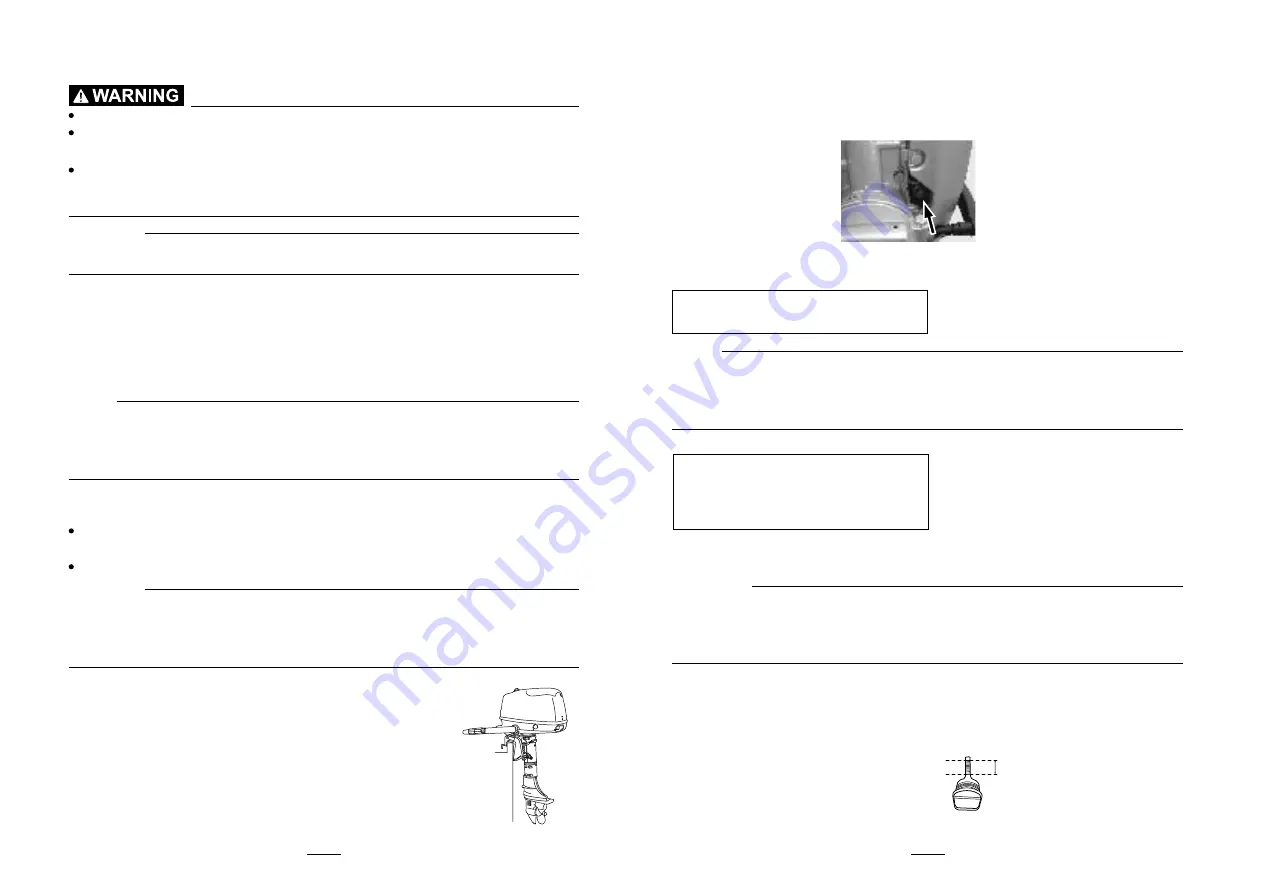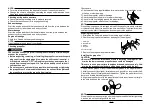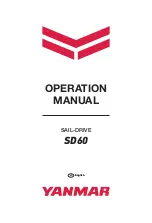
28
29
Inspecting idling speed
Do not touch or remove electrical parts when starting or during operation.
Keep hands, hair, and clothes away from the flywheel and other rotat-
ing parts while the engine is running.
2-hp models: The propeller rotates whenever the engine is running. Do not
move the throttle control lever from the start position during warm-up. The
boat could unexpectedly start to move, which could result in an accident.
CAUTION:
This procedure must be performed while the outboard motor is in the water.
A flushing attachment or test tank can be used.
A diagnostic tachometer should be used for this procedure. Results may vary
depending on whether testing is conducted with the flushing attachment, in a
test tank, or with the outboard motor in the water.
1. Start the engine and allow it to warm up fully in neutral until it is running s-
moothly. 2-hp model: Warm the engine with the throttle in the start position
or less. If the outboard is mounted on a boat is tightly moored.
NOTE:
Correct idling speed inspection is only possible if the engine is fully warmed
up. If not warmed up fully, the idle speed will measure higher than normal. If
you have difficulty verifying the idle speed, or the idle speed requires adjustment,
consult a dealer or other qualified mechanic.
2. Verify whether the idle speed is set to specification. For idle speed specifications, see page 23.
Changing engine oil
Avoid draining the engine oil immediately after stopping the engine.
The oil is hot and should be handled with care to avoid burns.
Be sure the outboard motor is securely fastened to the transom or a stable stand.
CAUTION:
Do not overfill the oil, and be sure the outboard motor is upright (not
tilted) when checking and changing the engine oil.
If the oil level is above the upper level mark, drain until the level meets the
specified capacity. Overfilling the oil could cause leakage or damage.
1. Put the outboard motor in an upright
position (not tilted).
2. Prepare a suitable container that holds a larger amount than the engine oil
capacity. Loosen and remove the drain screw while holding the container un-
der the drain hole. Then remove the oil filler cap. Let the oil drain completely.
Wipe up any spilled oil immediately.
3. Put a new gasket on the oil drain screw. Apply a light coat of oil to the gas-
ket and install the drain screw.
Drain screw tightening torque:
18.0 Nm (13.3 ft-ib)(1.84 kgf-m)
NOTE:
If a torque wrench is not available when you are installing the drain screw, fi-
nger tighten the screw just until the gasket comes into contact with the surfa-
ce of the drain hole. Then tighten 1/4 to 1/2 turn more. Tighten the drain scr-
ew to the correct torque with a torque wrench as soon as possible.
4. Add the correct amount of oil through the filler hole. Install the filler cap.
Recommended engine oil:
4-stroke outboard motor oil
Engine oil quantity (excluding oil filter):
0.4 L(0.42 US qt)(0.35 Imp.qt)
5. Start the engine and watch to make sure the low oil pressure warning indicator
(if equipped) turns off. Make sure that there are no oil leaks.
CAUTION:
If the low oil pressure warning indicator does not turn off or if there are
oil leaks, stop the engine and find the cause. Continued operation with
a problem could cause severe engine damage. Consult your dealer if
the problem cannot be located and corrected.
6. Turn off the engine and wait 3 minute. Pull out the oil dipstick and wipe it
cleam.Completely resinsert the dipstick and pullout it again.Check the oil
level using the dipstick to be sure the level falls between the upper and lower
marks,Fill with oil if it is below the lower mark,or drain to the specific level if it
is above the upper mark.
7 . Dispose of used oil according to local regulations .



































